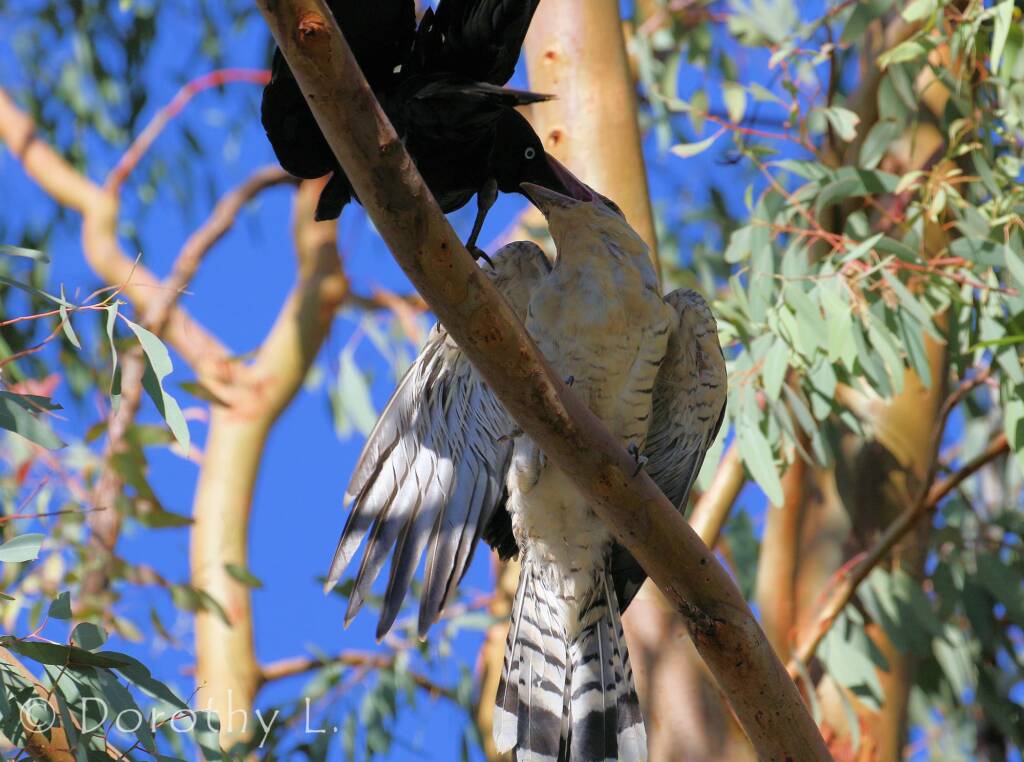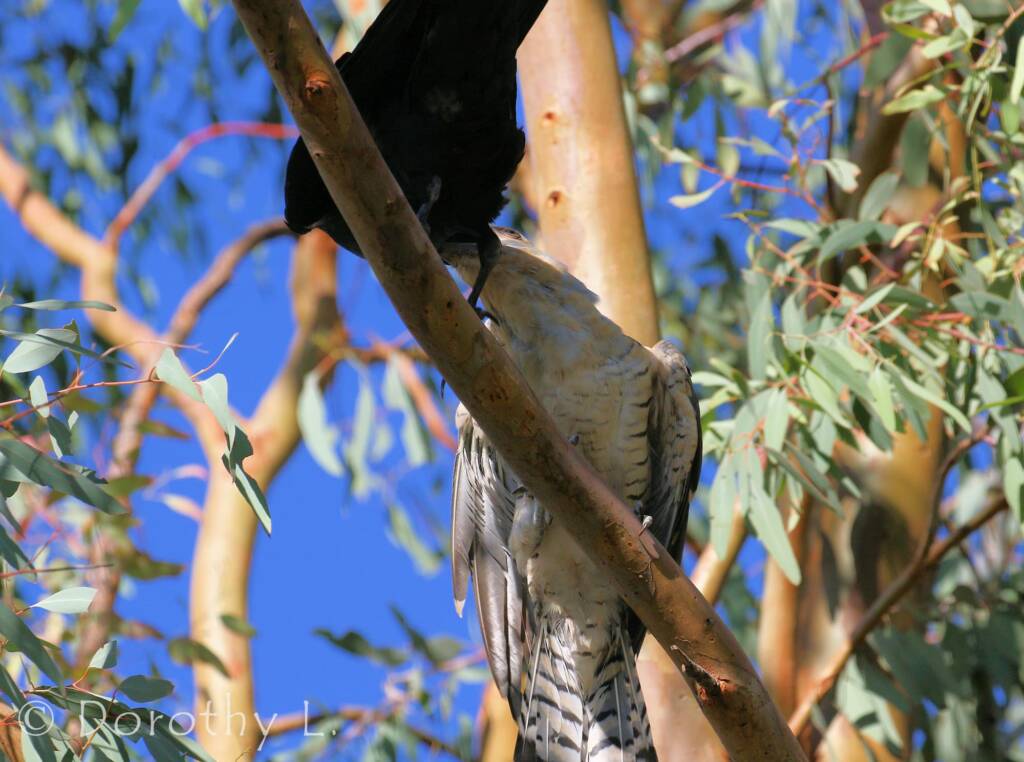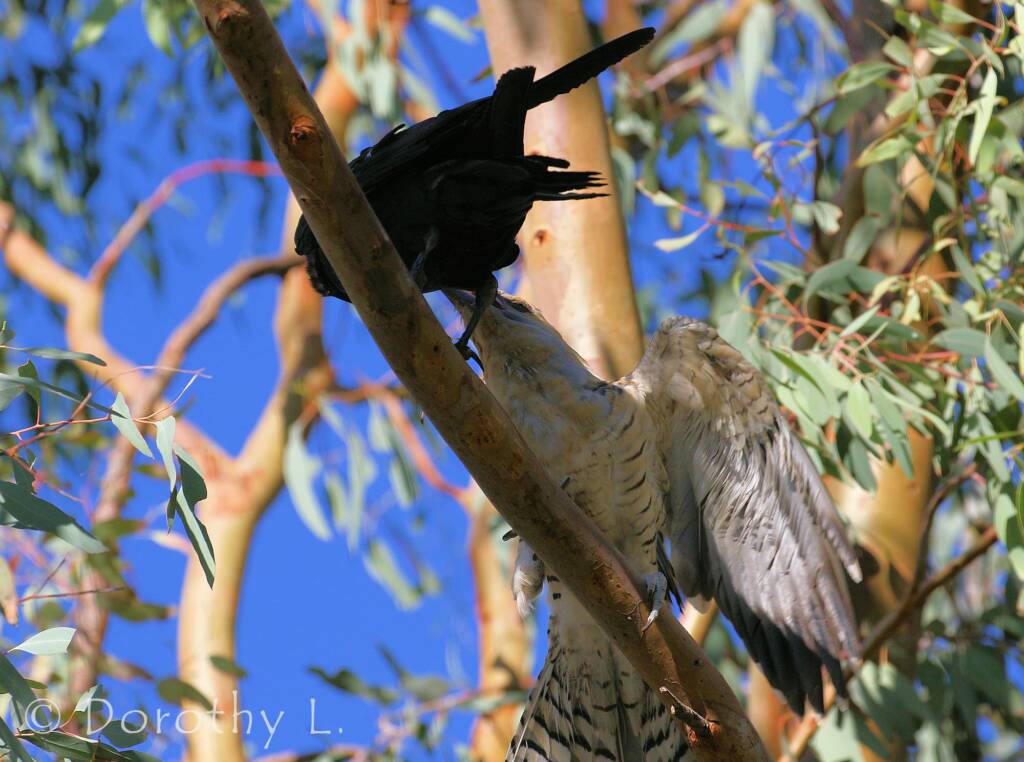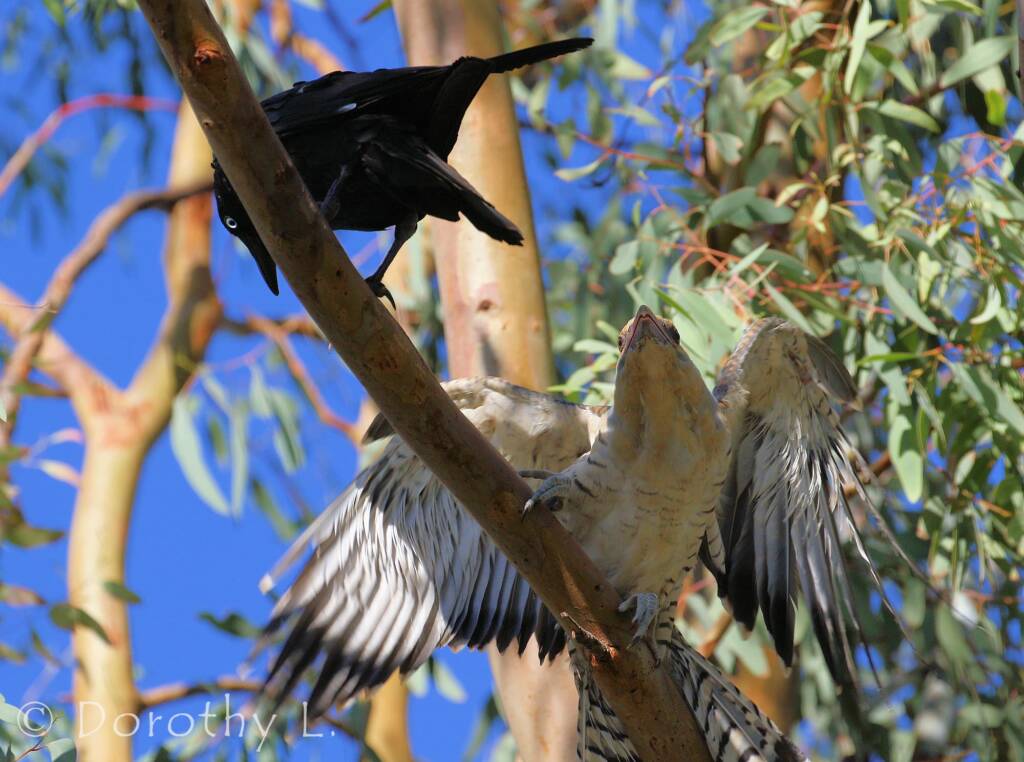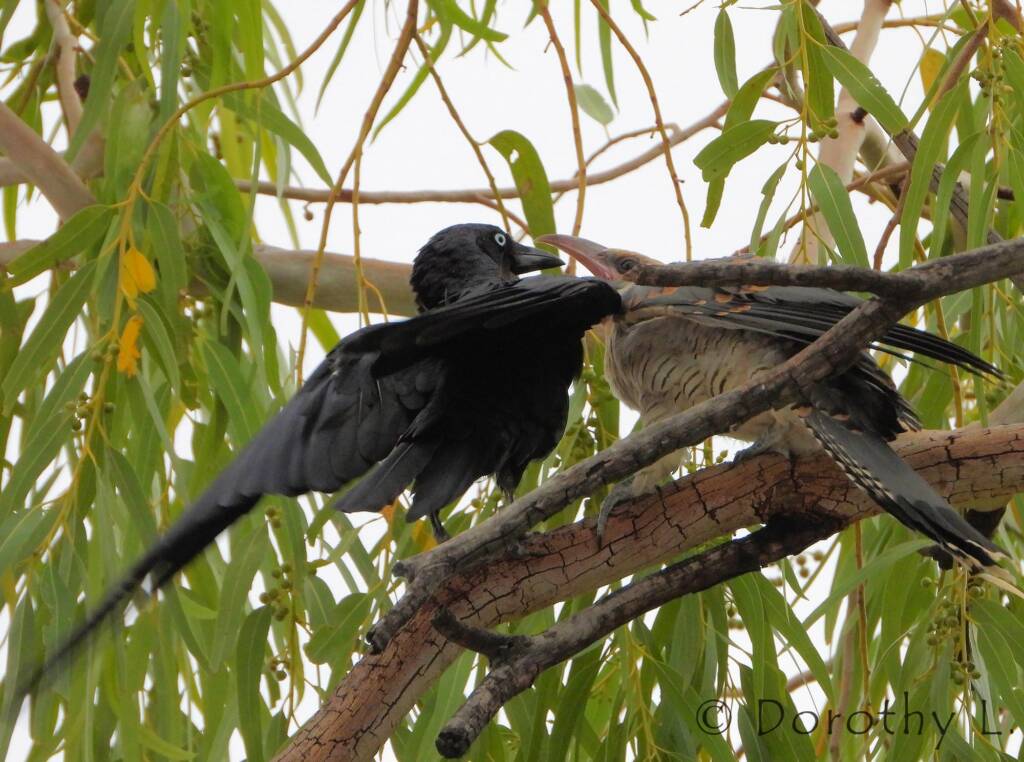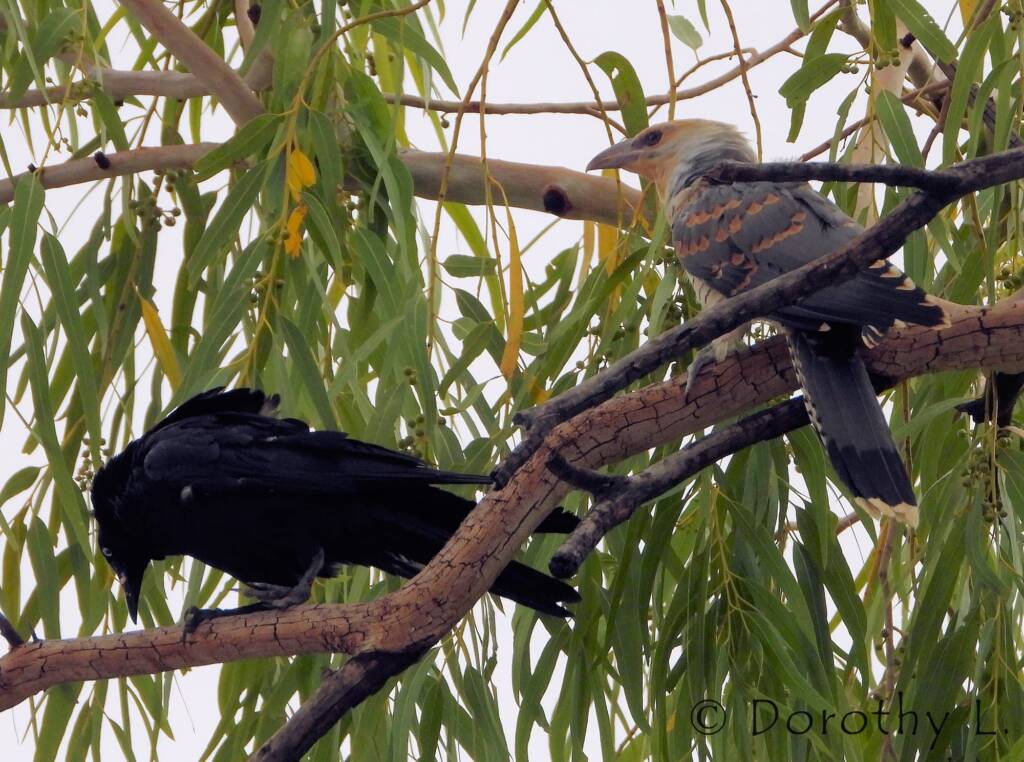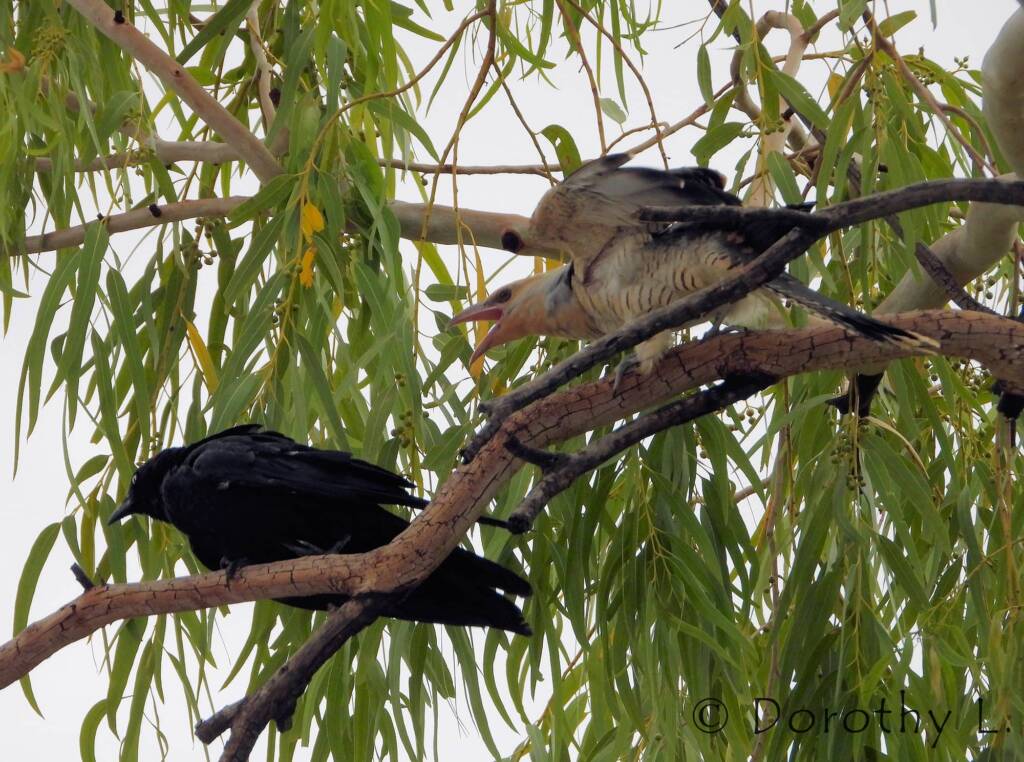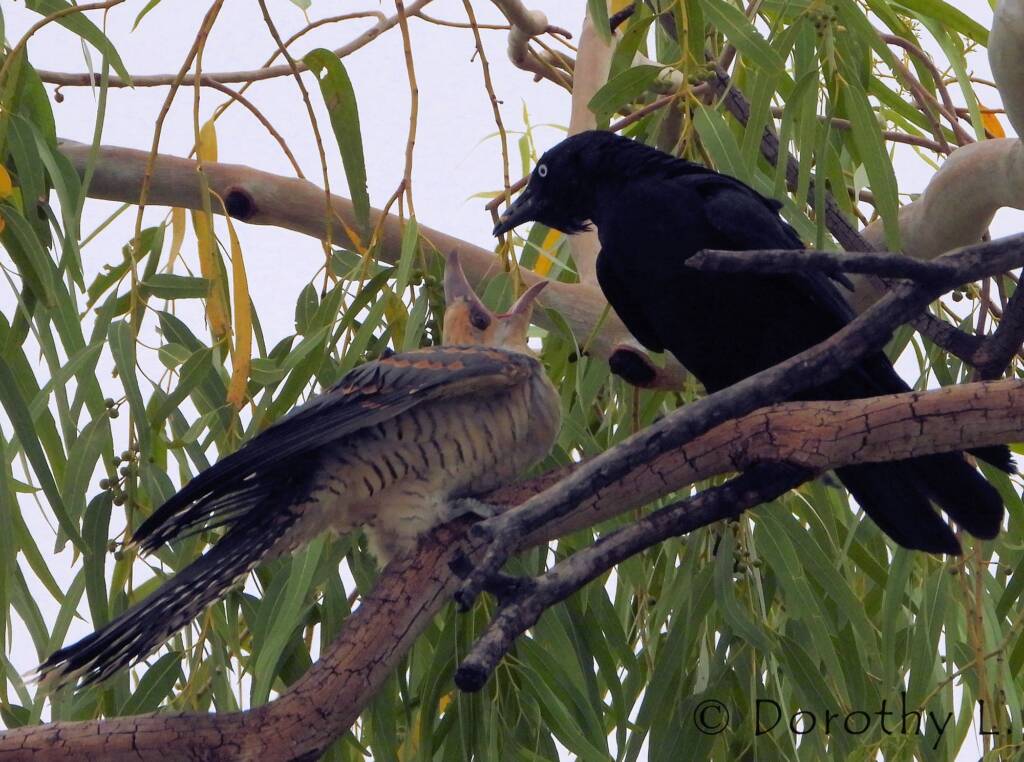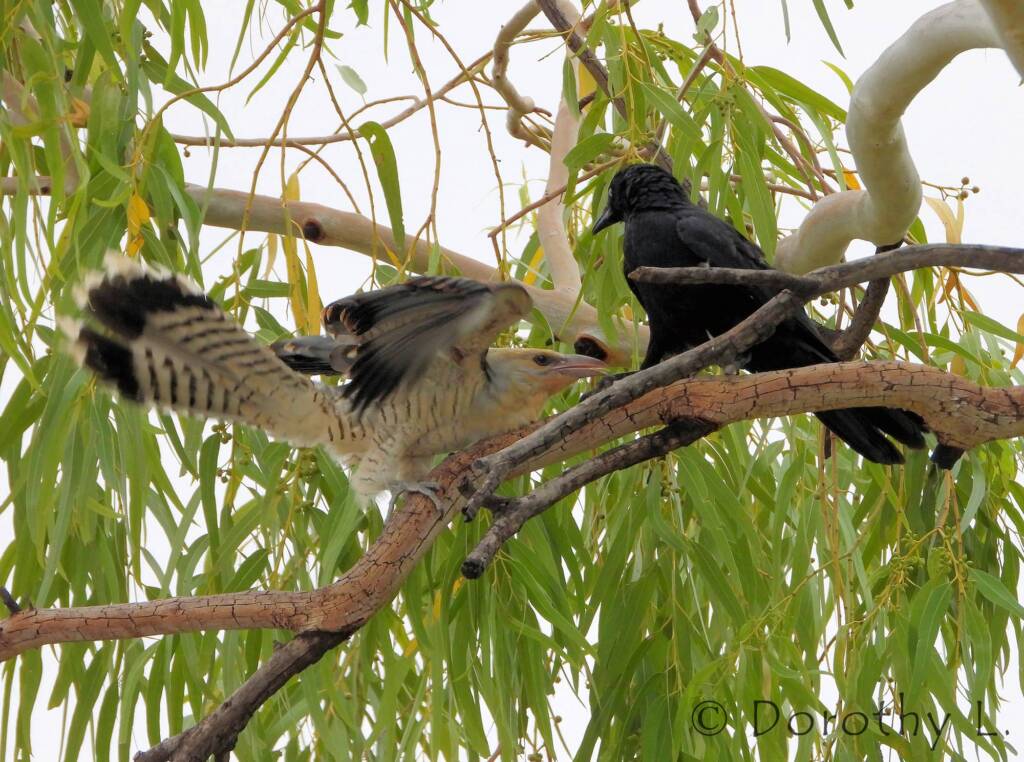Author JeLa D ◦ Photos by Dorothy L. ◦
It seems that the fostering was too good as the teenager does not want to leave home…
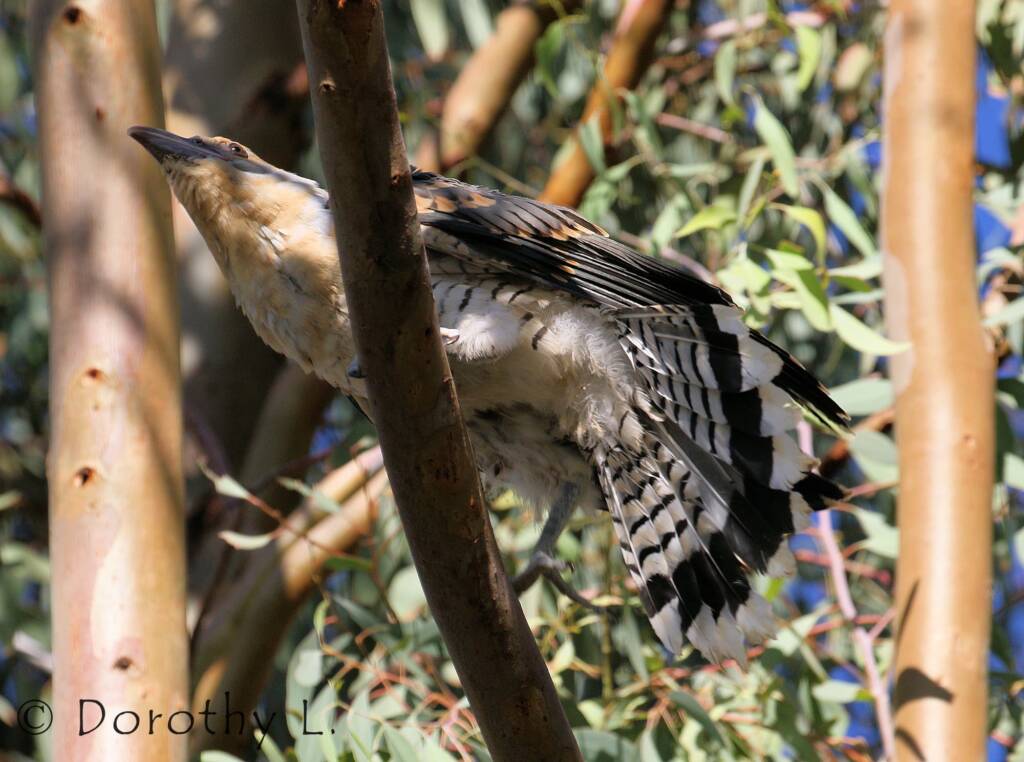
It is now the month of May and a definite chill is happening, ‘winter is coming’ here in Alice Springs.
An unusual bird call I had been hearing and mentioned to my son-in-law, had me ambling outside to see if I could locate the tree that it was coming from.
Shock! Excitement! I raced back inside, grabbed my camera, turned it on… Battery Exhausted!!! Oh no!! Bugger, I forgot to charge it after Sunday morning’s foray out bird watching.
I quickly picked up my Canon camera, removed the macro lens, then put the 100-400 lens on the camera and tried to walk quickly, but quietly back to where the juvenile cuckoo was sitting.
Click! click! click! my foster bird moving this way and that, posing for me.
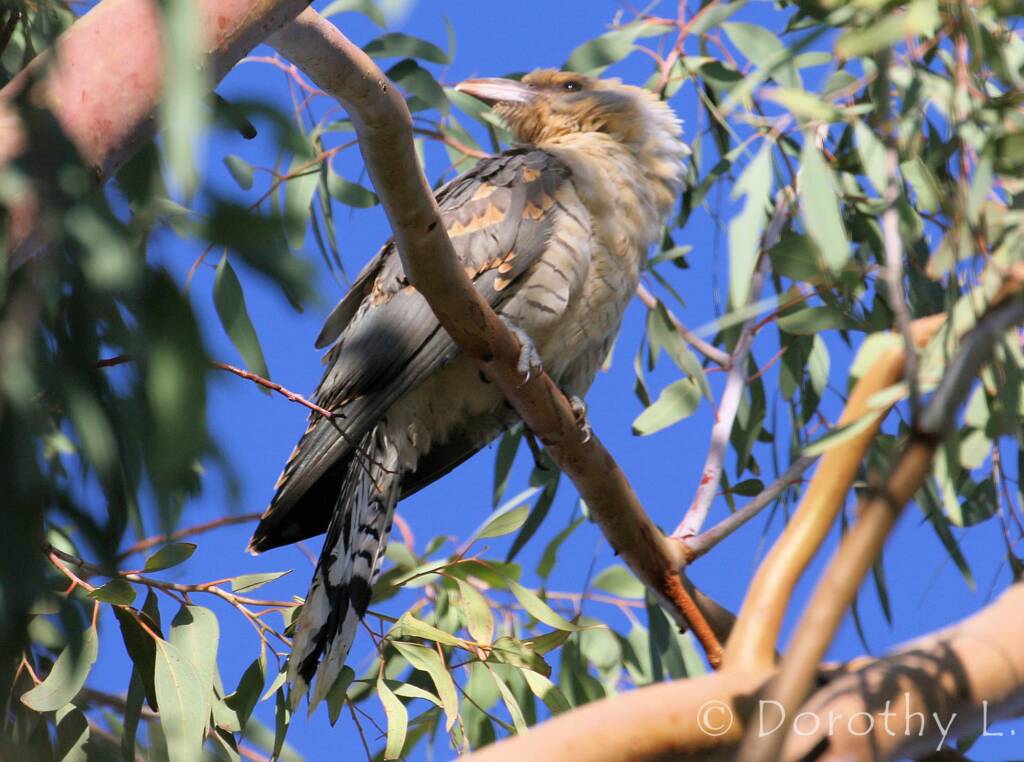
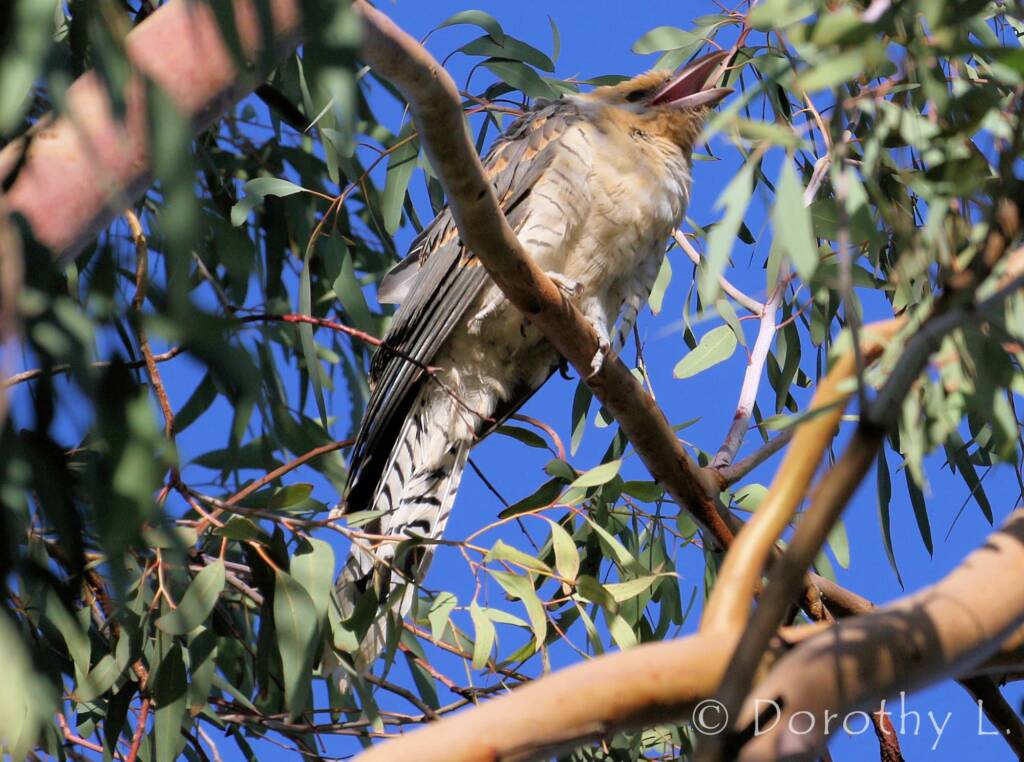

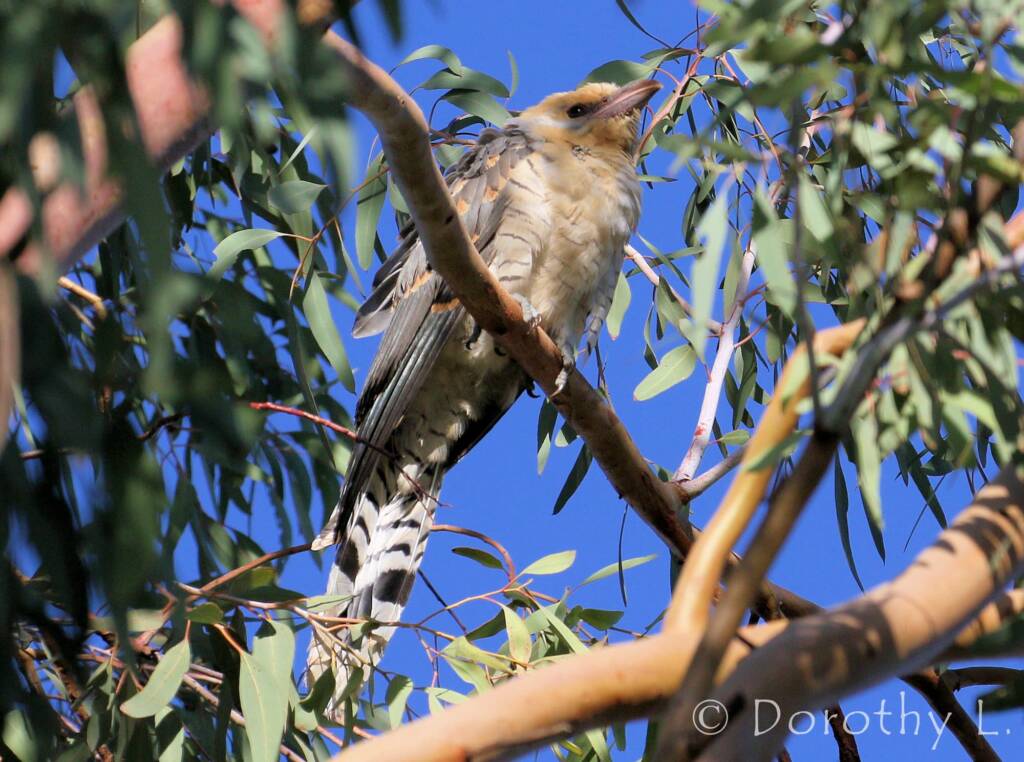
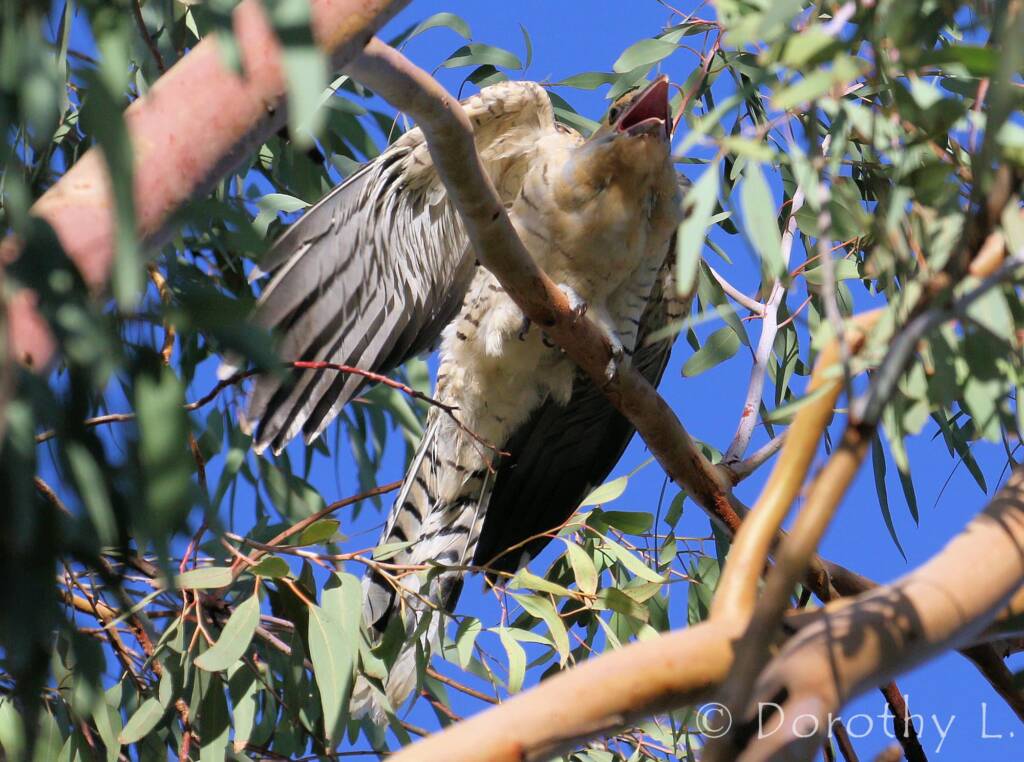
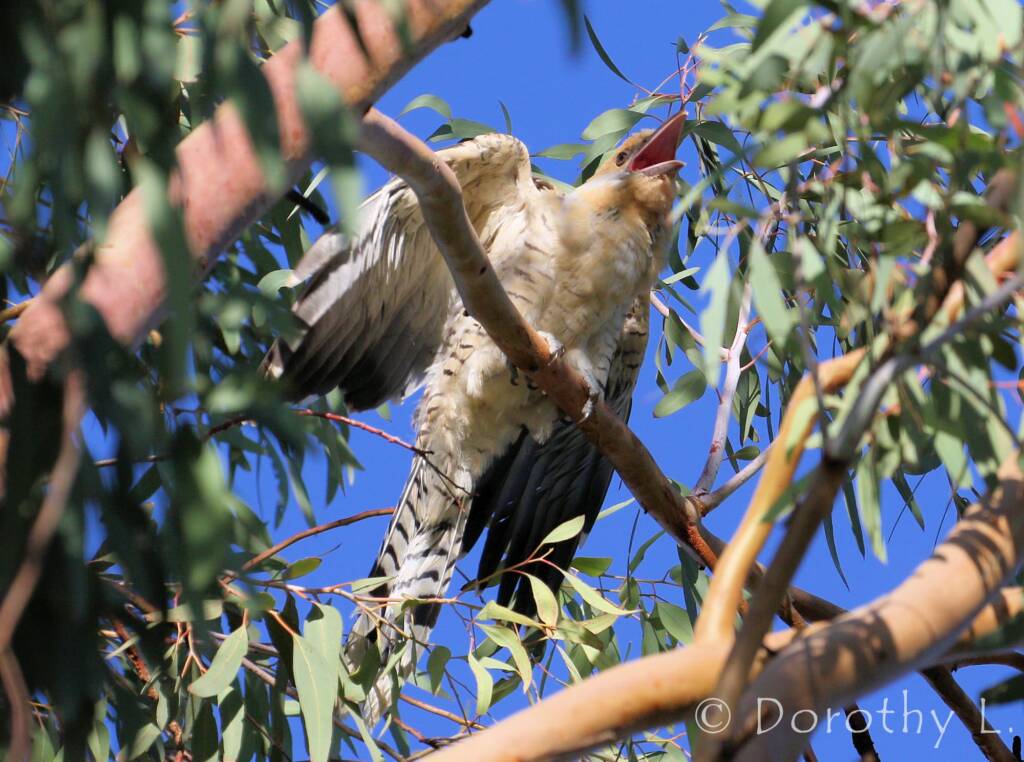

The Mudlark in particular was quite perturbed by the cuckoo being here. Doing fly-bys hoping the young cuckoo would leave. The Bowerbird and White-plumed Honeyeater added their weight to no effect.
Out of the corner of my eye, while I am still concentrating on my foster bird, two adult Channel-bill Cuckoo flew by. Well, well this is a surprise as I had not heard their call since early March. I presumed they had left!!
All this excitement so early in the day.
I had been asked to do a short audio movie, so I could record the juvenile cuckoo’s call. It’s not a Cuckoo’s call, nor a Torresian Crow’s sound. My luck was holding nicely. The juvenile totally out in the open now, I fumbled to select the red button to begin the audio movie.
I then muse to myself, “Wouldn’t it be nice to make an appointment for these sessions!! Then I would be able to set myself up with the tripod, maybe a chair and definitely a cuppa, before starting.” But would it be as exciting as this??? Probably not.
My foster juvenile continued to sit on the limb clear of foliage, blue skies behind it calling out to be fed. I tried to keep the camera still but I have to breathe!!
A short movie then the cuckoo flew out of view, end of session for today. That’s a wrap!!
Normally the Cuckoo’s would have left Central Australia by now to return to New Guinea or Java, where it is warmer over our winter, then returning about late September early October for mating.
For more info and images, check out the Fauna Index for the Channel-billed Cuckoo.
CBC… fostering | A Home Like Alice…





